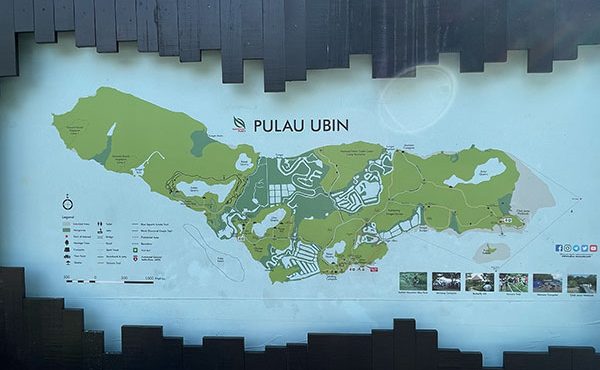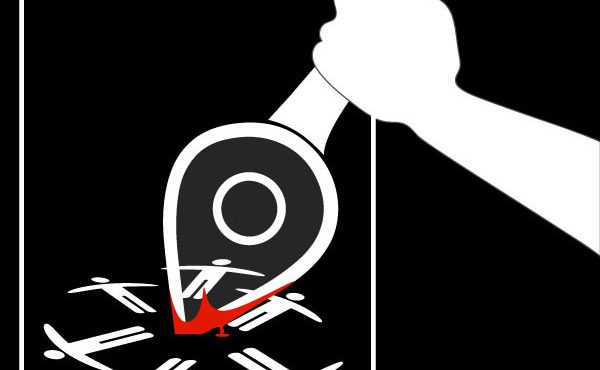

[Editor’s Note: Former Vancouver reporter Christine McLaren is traveling around the world as the resident blogger for the BMW Guggenheim Lab, a mobile think tank investigating solutions to urban problems. In October the project wrapped up its three-month run in New York City — which featured programming by Vancouver author Charles Montgomery — and will travel next to Berlin, and on to Mumbai. This story originally appeared on the Lab’s blog, the Lab|log.]
We see them every day, popping up on our Twitter feeds, filtered through blogs, or even scattered throughout the New York Times: maps portraying not the usual locations or destinations, but data.
From people’s kisses in Toronto, to the concentration of pizza joints in New York, to the number of women who ride bikes, to the likelihood of being killed by a car in any given American city, the list of lenses through which we can now view our cities and neighborhoods goes on, thanks to data-mapping geeks.
“The map user has now become the map creator,” is how Fraser Taylor put it to me in an interview. The director of the Geomatics and Cartographic Research Centre at Carleton University, Taylor is one of the world’s leading cartographers, standing as the director of the International Steering Committee for Global Mapping and a member of the United Nations Expert Group on Global Geographic Information Management as well as a host of other major international mapping organizations.
He describes what’s going on as an enormous cultural shift from a previous era when the mapping of our cities (or countries, or world, for that matter) was placed mainly in the hands of government mapping authorities.
But even more importantly, Taylor says, we are also mapping new things—intangibles like social phenomena, feelings, impacts, and more.
“Individuals inside cities and elsewhere are creating maps for themselves and in fact giving us their own narrative of what a cityscape is about. They are telling us what is important to them, and they’re mapping the kinds of things that previously would not be mapped,” he says. “It’s becoming part of the creation of a culture of a city.”
The democratization of mapmaking is the result of a potent mixture of digital revolutions.
Combine the phenomenon of governments opening their data to the public with the new ability to crowdsource information. Then add the introduction of open-source mapping tools like OpenStreetMap, and the fact that within just around five years nearly every one of us has equipped ourselves with a mobile device with GPS technology.
Suddenly—boom—we’re seeing our cities laid out in front of us in an entirely new way. Every day.
But at some point, as with any technological revolution, it warrants taking a step back from the excitement and asking ourselves: what is it all good for?
Sure it’s fun, fascinating, and informative to see our city through these various curious lenses. We understand it in new ways, yes. But does it actually matter? Does it change our behavior, or it is just a toy?
In other words: Now what?
One glimpse of the potential this all holds can be found on Datablog, the Guardian blog dedicated entirely to data-based journalism. Datablog has mapped everything from the impact of cuts to housing benefits in the UK to government attempts to get Google to remove content or reveal data about its users, providing not only the maps and data sets but often the analysis necessary to understand the implications.
The impact of this became especially apparent during the riots that shook the United Kingdom in the summer of 2011. When UK Prime Minister David Cameron denied outright that the riots had anything to do with poverty, Datablog countered the claim with, well, data.
Overlaying the addresses of the defendants in the riots with concentrations of poverty, the website produced a map showing a much different picture: nearly 60 percent of those appearing in court lived within the top 20 percent of England’s most deprived areas.
“Ten years ago you would have had to be a major GIS (Graphic Information System) specialist to even approach to do that,” says Datablog editor Simon Rogers. Now anyone with basic computer skills could learn to do it at no cost.
Rogers says the key to making data maps work lies in layering. While one set of data on a map is interesting, two or more tell a story that really teaches us something.
Much like rioters’ addresses spread atop a poverty map illuminates a potential factor in criminal behavior, perhaps Torontonians’ kisses laid over a map of traffic congestion, open public space, or concentration of trees would tell us not only where we experience moments of intimacy, but why.
It suddenly puts citizens in a powerful position by giving them the ability to make demands from their governments based not on anecdotes but on more detailed facts and correlations than ever before—should they choose to.
“I think we’re now in a position where we [the media and the public] can really make a difference. When the rest of the world is desperate to know what this stuff means, we can be that bridge to the data,” says Rogers.
“Government-released information is brilliant. But at the same time the government is not going to analyze it for us. It’s not their job to do it. I think people have kind of stepped back a bit and are waiting for them to do it, and they’re not going to. It’s up to us to do that. It’s our job to hold them to account. It’s kind of impossible to lie on an issue that’s data-led, because someone will pick you up on it.”
And while Fraser Taylor is equally enthusiastic about the potential that crowdsourced and open-data mapping holds, he says that the biggest hurdle yet will be finding a way to convince governments and mapping agencies of the data’s reliability.
“As of yet there is still a resistance on the part of both government and national mapping agencies to this information. They’re always saying, ‘What is the quality of this information? Is this stuff reliable or not?’ But increasingly people are coming around to realize that there are ways of dealing with the so-called reliability issue and the accuracy issue in a way which can lead to an enrichment of society and an enrichment of their own products,” he says.
Taylor himself is currently working to develop a crowdsourcing framework that automatically creates metadata (data about the data), thus enabling the merging of crowdsourced data with that of authorities and hard science.
He points out that an increasing number of mapping agencies, including the national mapping agency of Canada, where he is based, are already looking at volunteered geographic information as a direct input into its official mapping.
There’s no doubt in Taylor’s mind that this is the beginning of a very new and exciting era—one that puts citizens in the position to understand and influence the politics of their cities as never before.
And as for those kissing maps? Are they worthwhile, too?
“Absolutely,” Taylor says. It’s all part of the historical narrative of our cities—one that will be more democratically recorded in this generation than ever before.
“The image of your society was once determined by those who had the power to determine what would be mapped, and what wouldn’t be,” he says.
“Today that is changing.”
***
This story was originally published on Lab|log at bmwguggenheimlab.org. © 2011 The Solomon R. Guggenheim Museum, New York. Used by permission.
**
Christine McLaren is a freelance journalist who investigates solutions to urban problems. Her writing and research explores how the shape of our cities impacts the lives and behavior of those living in them and how shifting social, environmental, and economic climates are changing our relationship with the urban fabric. She has written and reported for numerous magazines and print, online, and television news outlets, was the lead researcher for award-winning Canadian journalist and Lab Team member Charles Montgomery’s upcoming book Happy City, and conducted research for National Geographic Emerging Explorer Alexandra Cousteau‘s upcoming book, This Blue Planet. She is currently traveling as the resident blogger for the BMW Guggenheim Lab, a mobile urban think tank investigating urban solutions in nine cities around the world.



